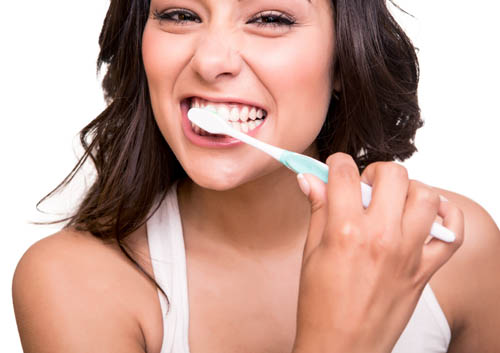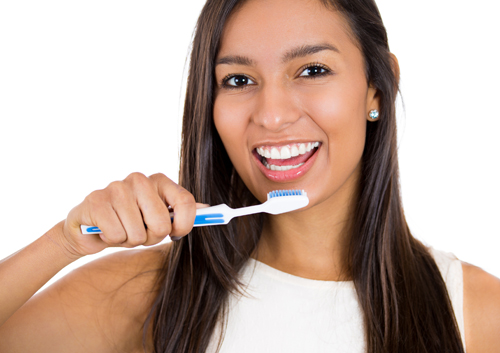Are you a candidate for dental implants?
September 29th, 2015

When you are missing teeth, it is critical to replace them. Without all your teeth, chewing and eating can be challenging, as well as uncomfortable. Missing teeth can also destabilize your bite. Dental implants are a great option for replacing teeth that are missing or are badly diseased. A dental implant at High Point Dental Group offers relief, support, and stability to your bite, and often, implants are the most natural and effective option available.
Dr. Angela Paros, Dr. Anthony Reganato and Dr. Matthew Hamedani and our team have helped many patients using implant dentistry at our Romeoville, IL office restore their smiles to look more natural. Each implant is created to fit in perfectly with the look of the rest of your teeth.
Besides making your smile appear more natural, dental implants have other benefits. They include:
- Restoring your ability to properly chew food
- Preventing your teeth from shifting and moving
- Stabilizing your bite, helping you avoid pain or discomfort
If you are missing a tooth or multiple teeth and feel like you are a candidate for dental implants, Dr. Angela Paros, Dr. Anthony Reganato and Dr. Matthew Hamedani and our team at High Point Dental Group encourage you to give us a call to schedule an appointment. See you soon!
Proper Brushing Techniques
September 22nd, 2015

Brushing your teeth properly removes the food particles and bacteria that can lead to tooth decay and gum disease. However, you do not want to scrub your teeth or gums heavily. A heavy hand can lead to tooth and gum erosion, as Dr. Angela Paros, Dr. Anthony Reganato and Dr. Matthew Hamedani and our staff see all too often.
You should also use a soft bristle toothbrush to avoid damaging the surface of your teeth. Make sure the head of the brush fits in your mouth, because if it is too large you will not be able to reach all tooth surfaces. Follow these steps to ensure you are brushing properly.
- Use a small amount of toothpaste on your brush. The recommendation is a pea-sized amount or thin strip on the bristles.
- Hold your toothbrush at a 45-degree angle to the surface of your teeth, angling towards your gums. Use a circular motion on all exterior tooth surfaces, and avoid back-and-forth “scrub” brushing.
- Once you have cleaned the outer surfaces, hold the brush vertically and clean the inner teeth surfaces — the side of your teeth that face your tongue. Do not forget the inner surfaces of your front teeth.
- Finally, finish by cleaning all the chewing surfaces of your teeth. You need to maintain a gentle touch, but make sure you get into the full depth of your molars. The entire process should take about two minutes.
Dr. Angela Paros, Dr. Anthony Reganato and Dr. Matthew Hamedani and our staff recommend changing your toothbrush every three to four months for best results. Do not forget to clean your tongue, which helps remove excess bacteria from your mouth. Special brushes are available just for cleaning your tongue, and they are easy to use.
Proper care of your teeth also requires flossing on a regular basis. Flossing can be performed before or after you brush. Following up with a quality mouthwash will provide you with even more protection. Do not be afraid to ask the High Point Dental Group team for tips on proper brushing and flossing.
What to Look for when Choosing a Mouthwash
September 15th, 2015

Mouthwash is important for more than just keeping your breath fresh and smelling great. Combined with other forms of dental hygiene, it can help prevent plaque, cavities, gingivitis, and other gum diseases. But it may be difficult for you to choose the right mouthwash off the shelf. Dr. Angela Paros, Dr. Anthony Reganato and Dr. Matthew Hamedani and our team at High Point Dental Group wanted to share a few things to look for when choosing a mouthwash.
Fluoride mouthwashes
Fluoride has been the subject of many debates in the oral health community. If you live in the United States, the tap water already contains small amounts of fluoride to promote dental health. You may not need to use a fluoride mouthwash if this is the case. However, if you are cavity-prone, fluoride creates a protective film over the teeth that protects against these buildups. It also helps strengthen the enamel over the teeth, maintain good dental hygiene, and keep your teeth strong for the rest of your life.
Alcohol mouthwashes
Alcohol in mouthwash works as an antiseptic: it clears the mouth of germs and some viral infections. However, if you have issues relating to dry mouth, alcohol can exacerbate the problem. If this is the case, consider using an alcohol-free mouthwash. This will free your mouth from the drying effects of the alcohol base. Also, if you have children, you will want to get an alcohol-free children’s mouthwash, because kids are prone to swallowing the substance, and this can lead to toxic side effects. Even if you are an adult using the mouthwash, if it contains alcohol, you should avoid swallowing it.
Antibacterial mouthwashes
Antibacterial mouthwashes have chemicals to help fight gum disease and other infections. Most mouthwash products contain at least trace amounts of these antibacterials; however, some mouthwashes are made specifically to fight bacterial infections. Remember that mouthwash is prevention, not a cure, so if you are presently suffering from a bacterial infection, you should visit our Romeoville, IL office right away. Dr. Angela Paros, Dr. Anthony Reganato and Dr. Matthew Hamedani may be able to recommend a more powerful antibacterial mouthwash that can help you reduce your pain and other symptoms.
How do I pick the right toothpaste for my needs?
September 8th, 2015

With so many toothpastes available in so many price ranges, it can be difficult to be sure you are selecting the right one for your needs. You need a product that not only protects against tooth decay, but also addresses any special concerns that Dr. Angela Paros, Dr. Anthony Reganato and Dr. Matthew Hamedani and our team have raised. Look for the American Dental Association seal and do some research to find the toothpaste that best meets your needs.
Choose a Product Approved by the American Dental Association
The American Dental Association approves dental products such as toothbrushes, dentures, mouthwashes, dental floss, and toothpastes when they meet certain quality standards. Before products can display the seal, the American Dental Association must verify that the product does what it claims to do. Look for the American Dental Association seal on the toothpaste package before you buy it. Also, check to make sure that the toothpaste contains fluoride, which helps protect against decay.
Consider Special Needs
You may be depending on your toothpaste to perform extra tasks beyond cleaning your teeth. These are some common concerns that the right toothpaste can address.
- Bad breath (halitosis)
- Sensitive teeth
- Plaque or gingivitis
- Tartar
- Yellowing teeth
The American Dental Association’s website has a tool that lets users input their requirements and view a list of the toothpastes that carry the American Dental Association’s seal and address those particular oral health needs.
Make Your Children’s Tooth-Brushing Experience Fun
If you select toothpaste that contains fluoride and has the American Dental Association seal, most types of toothpaste will be fine for your children as long as they have no special needs. Allowing your kids to select fun toothpaste can encourage them to enjoy the brushing experience more, so that they brush more frequently and do a better job.
The following toothpaste characteristics can make brushing more fun for children.
- Fun flavors, such as bubble gum, berry, and watermelon
- Sparkles and swirls that make the toothpaste appear more attractive
- Toothpaste that comes in a pump
- Toothpaste with a container decorated with superheroes






